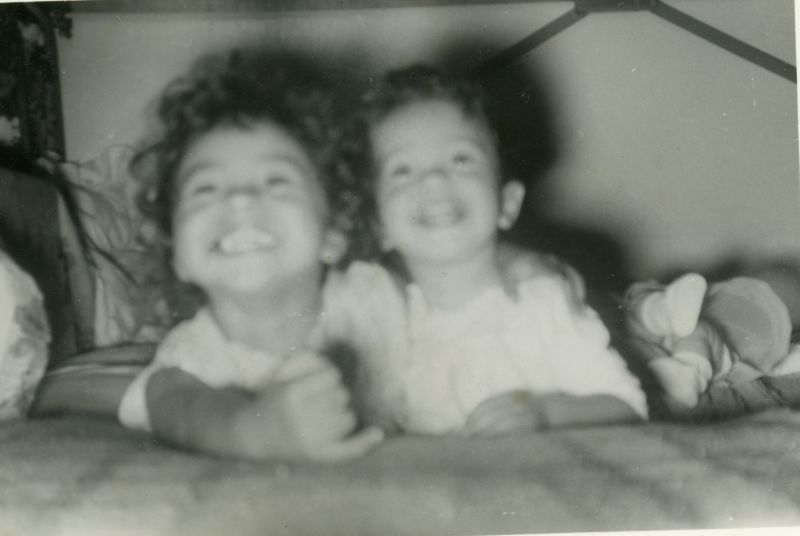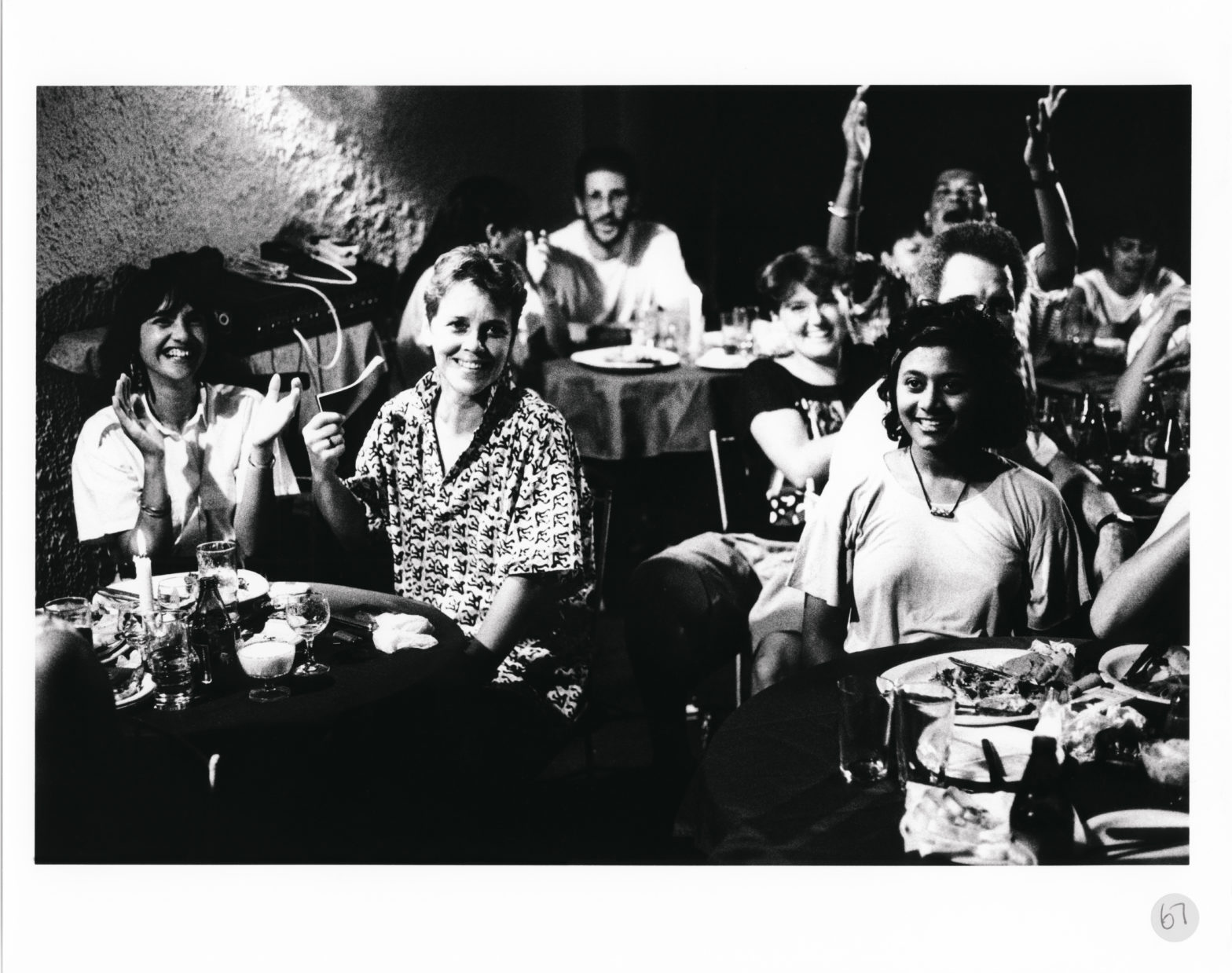Joy has been popping up in my feeds a lot lately. One of the more recent posts was an image of a jazz musician, Jon Batiste, playing freedom songs and hymns on a joyfully decorated upright piano at a protest march in New York. 972 more words


Joy has been popping up in my feeds a lot lately. One of the more recent posts was an image of a jazz musician, Jon Batiste, playing freedom songs and hymns on a joyfully decorated upright piano at a protest march in New York. 972 more words

In 1989, I was arrested along with hundreds of others during a peaceful protest march in central Cape Town. When the crowd refused to disperse, the police attacked with teargas, batons and a water cannon filled with purple dye. As we were piled into the back of police vans, we carried on singing the freedom songs we had been singing during the march. What I remember most is the camaraderie among the forty women with whom I was packed into the cell at Caledon Square Police Station. I don’t remember who started singing but soon more and more voices had joined in and a policeman ordered us to keep it down. Buoyed by the music, we kept going through the night. By the time we were released, we were united by the conviction that our struggle was just.
The 1980s were characterised by the Defiance Campaign and a state of emergency as the apartheid government dug its heels in and enforced its policies. One day we would be reclaiming the beaches with Archbishop Tutu, policemen and dogs chasing and whipping us. Another we would be dodging rubber bullets and teargas and sometimes live ammunition would be flying in townships like Manenberg. When restrictions were imposed on public gatherings, concerts, clubs and house parties offered an alternative means of getting together. Activists would be at the jazz gigs and musicians would be playing at rallies; often the music concert would be the rally (Milton, 2010).
Funerals were another way to gather in defiance of the restrictions. Nkosi Sikelel’ iAfrika, our unofficial national anthem, would start slowly and build into a crescendo binding us all together, at once an act of resistance and a celebration of the lives lost.
Music was the background to my childhood during the 1960s and 1970s – traditional Malay liedjies sung at weddings, the sounds of the coons and marching bands at Christmas, or sitting on the stoep singing songs that my father had taught us. As children we would be taken to see the troupes parading through District Six. Bunting in different colours would be strung up high across the streets to show support for different teams. The whole community, including the tailors and seamstresses in Hanover Street, would have been preparing for months.
At all hours of the day music would stream from the house across the road, where our friend, Sean, lived. The house on the corner of Park and Princess had something that not many other houses in the neighbourhood had – a piano. Sean could listen to a song on the radio and then play it on the piano. He was spotted at church by the pianist, Henry February, when he was five years old; standing to play the organ so that he could reach the bass pedals. Mr February took him under his wing and Sean was fortunate to have the attention of a skilled teacher (O’Connell, personal interview 2013).
Many talented coloured and black children simply had no access to instruments or tuition. Because of Mr February, Sean was drawn to jazz and by the time he was 17 he was playing in venues in the coloured areas. The Galaxy, a well-known club on the Cape Flats, hosted live jazz bands where musicians like Errol Dyers and Robbie Jansen could be heard (O’Connell, personal interview 2013, April 9). The music played here was quite distinct from the pop music being played in white clubs. Bands like Blood, Sweat and Tears and Chicago were influential on local music, but because of the isolation brought about by apartheid, a more distinctive sound developed along with a style of “jazz dancing” unique to coloured people in the Cape (Smith, personal interview 2013).
Performing outside of coloured areas was fraught with difficulties. Group areas, pass regulations, and laws forbidding Africans to appear at venues where liquor was served, severely limited opportunities for performers. Sean remembers that when he and his band, Airborne, were booked to play at The Lido in Sea Point, a white suburb, they were not allowed to eat in the restaurant with white patrons and were given a table backstage. This time one of the wives who accompanied them was “not pale enough” to be allowed onto the premises. The band refused to perform and left in spite of the angry Greek owner.
Well-known jazz trumpeter, Ian Smith, recalls that in the 1970s there were only two places where musicians could play together – the Arts Centre in Green Point (now a McDonald’s takeout), or at the Space Theatre which was well-known for mixing of all the arts and was regularly raided by the police. At other venues like The Barn, at the Hohenhort Hotel, black and white musicians were able to perform together but to segregated audiences. Black musicians were not allowed to use the front entrance of the hotels, and often had to play behind a curtain.

Finding rehearsal spaces was challenging and they usually practised in a back room or a garage at someone’s house. “You had to be creative to find places to rehearse…and work harder to get your music out to an audience. Musicians were colour-blind. We just got on with it” (Smith, personal interview 2013, April 3). He recalls musicians like Merton Barrow, Morris Goldberg and Monty Weber, from the Jewish community, playing a key role in bringing musicians together.
South Africa’s rich legacy of music can be traced back to the 17th century when the indigenous Khoi people first played European folksongs on a ramkie, the guitar-like Malay instrument. Music was a highly valued skill which could ensure a higher price for slaves who often formed part of the estate’s orchestra. The Malays, who were brought to the Cape from the East Indies by the Dutch, blended their music with Dutch ballads. Further musical integration happened between Coloured and African labourers brought to work on the diamond mines in Kimberley.
The Lutheran missions and the Salvation Army, which offered free musical education, contributed to the development of African choral traditions. The most famous example of this, Enoch Sontonga’s Nkosi Sikelel’ iAfrika, came to symbolise the struggle for African unity and liberation in South Africa (SA). Another influence on local music was minstrelsy, which took hold after McAdoo’s American Jubilee Singers toured SA at the end of the 19th century. This influence can still be seen today in Cape Town’s annual coon carnival (Donaldson, 2000).
It was jazz that would influence and shape most black music, fusing with mbaqanga, marabi and kwela, and with rock and popular music (Coplan, 1985: 192). “By the 1920s and 30s, the churches, schools, clubs, drinking houses, parties and dance halls of the black locations were producing a new generation of performance professionals. Versatile musicians absorbed almost everything, played for almost everyone, and gave birth to an authentically South African jazz” (Coplan, 1985).
When the National Party came to power in 1948 they set about institutionalising racial segregation and started dividing communities through laws governing the movement of black people. As the government bulldozed what they called “black spots” like District Six to make way for whites, clubs and halls were destroyed, musicians were excluded, and jazz was gradually deprived of its multi-racial audience. Despite censorship, musicians used song lyrics to comment upon social issues within the African community. The sounds of resistance were being spread on the radio, in the community clubs and halls and shebeens.
Passive resistance and anti-pass campaigns characterised the 1950s but amid the aggression and brutality of the struggle, the arts flourished. In the early 1960s Hugh Masekela with The Jazz Epistles helped to establish a strong culture of jazz amongst urban blacks. He got his big break when he joined the orchestra of the musical, King Kong, which toured the world for two years. After the Sharpeville Massacre, Masekela went into exile in the USA where, with the help of Harry Belafonte he became a star (Pfeifer, 2011).
Black performers had to choose between limited careers and second-rate treatment in SA or cutting themselves off from their communities to go into exile abroad. Even musicians like Dollar Brand who famously declared, “Julle kan ma New York toe gaan, ek bly in die Manenberg”, (You can go to New York, I’ll stay in Manenberg) eventually left along with Miriam Makeba and others, disillusioned with conditions in South Africa (Miller, 2007). Those who stayed behind believed that the exiles were being treated well while they were left “to throw stones”, i.e., to carry on the struggle (Smith, personal interview 2013). But many black SA performers achieved international recognition and were able to broadcast anti-apartheid messages to an audience that the musicians left behind could not reach under the censorship laws. In the early 1990s when people like Louis Moholo, Hugh Masekela and Miriam Makeba started returning, they were given a hero’s welcome (Lombard, 2010).
Dollar Brand returned home in 1968. In 1974 against the backdrop of another wave of forced removals which spelled the destruction of District Six, he (now known as Abdullah Ibrahim) along with Basil Coetzee, Robbie Jansen, Monty Weber and Morris Goldberg, recorded Mannenberg, which was to become the beloved anthem of hope and resistance for South Africans at home and abroad. Playing this piece in clubs and parties was guaranteed to get the crowd going. Its success was due to the combination of many different forms of SA music which listeners of all kinds could identify with. It was an affirmation of the validity of our music culture (Valentine, 2006).
When I tried to source photographs of this time, I was told, “We were too busy with music…or the struggle…!” The few which I was offered were either out of focus or badly composed. It was left up to professional photographers, like Rashid Lombard, who were also grappling with recording protest action and police brutality, to capture some of the history. Lombard is well-known for his photographs of the mass democratic movement in SA during the 1980s when he was a freelance photographer for the BBC, NBC and others. During this time jazz became a form of healing and therapy for him (Lombard, 2010). The musicians became his friends and family, evident in his empathetic and intimate portrayal of his subjects. His images celebrate who we are.
“Today I am still amazed at how, in such totally difficult times, so many different voices came through in the jazz scene. Our music has this depth thanks to all those musicians.” (Lombard, 2010: 48)
Jazz seems to have been born out of a need for freedom of expression. More than once during this project, I heard the comment hesitantly put forward that, in some bizarre way, apartheid forced photographers, musicians and other artists, to be more creative, in ways that they may not have explored. Jazz helped to integrate musicians and audiences and got them speaking a common language. As American playwright, August Wilson, commented, “Because you can sing that song, that’s what enables you to survive. It wasn’t that “Aww, we sufferin’. It was like, we’re the people, we’re here, we’re vibin’” (Lewis, 2004).
FEATURED PHOTOGRAPH: Jazz lovers at a concert in Cape Town 1987
PHOTOGRAPHER: RASHID LOMBARD
This article is an edited version of a paper submitted towards my Public Culture in Africa course.